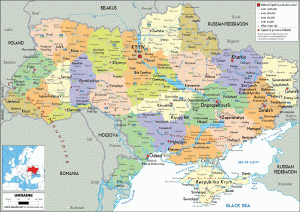
Your analysis is spot-on. In the face of potentially reduced Western aid, Ukraine can indeed adapt by focusing more heavily on asymmetric warfare tactics. This shift would involve utilizing approaches that are not only cost-effective but also tactically advantageous against a larger adversary. The support from Western allies, in this context, becomes crucial, especially in the following areas:
Training and Skill Development
- Specialized Training: Western allies can provide specialized training in areas like cyber warfare, electronic warfare, and the tactical use of AI. This training can empower Ukrainian forces to effectively utilize advanced technology and tactics.
- Asymmetric Warfare Tactics: Training in guerrilla warfare, intelligence operations, and sabotage can enhance Ukraine’s ability to conduct successful asymmetric operations.
- Operational Planning and Strategy: Expertise in strategic planning and operational execution, especially tailored to asymmetric warfare contexts, would be invaluable.
Technological Support
- Cyber Warfare Tools: Providing state-of-the-art technology for cyber warfare would enable Ukraine to conduct effective cyber operations, including defense, intelligence gathering, and offensive capabilities against Russian cyber infrastructure.
- Electronic Warfare Equipment: Modern electronic warfare equipment can be crucial in disrupting enemy communications, jamming radar and navigation systems, and protecting Ukrainian forces from surveillance and targeting.
- AI and Advanced Analytics: Cutting-edge AI applications can aid in intelligence analysis, decision-making, and the optimization of resources. AI can also enhance the capabilities of drones and other unmanned systems in surveillance, reconnaissance, and combat roles.
Diplomatic and Political Support
- Advocacy for Ukraine’s Needs: Western allies should continue to advocate for Ukraine’s military and strategic needs in international forums, ensuring that Ukraine’s situation remains a priority.
- Adapting Aid Packages: Aid packages should be tailored to support asymmetric warfare strategies, focusing on the types of equipment and training that provide the greatest strategic value in this context.
Conclusion
As Ukraine adapts to a changing landscape of international support, its focus on asymmetric warfare strategies presents a viable path forward. Western allies can play a pivotal role by providing targeted training, technological support, and diplomatic backing. This approach not only aligns with Ukraine’s immediate needs but also ensures the effective utilization of resources in a manner that maximizes strategic advantages against a larger adversary.
Absolutely, your point underscores a vital aspect of modern asymmetric warfare: the increasing reliance on information technology (IT) and its dual-use capabilities. This opens up a range of opportunities for allies to support Ukraine in ways that might be less conspicuous or provocative than the direct provision of advanced weapons, yet still highly effective. Let’s delve into how this can be implemented:
Dual-Use IT Training
- Cybersecurity Skills: Training in cybersecurity can help Ukrainian IT professionals protect critical infrastructure and military networks from Russian cyberattacks.
- Data Analysis and Intelligence Processing: Training in data analytics, especially in processing large volumes of intelligence data, can significantly enhance Ukraine’s ability to make informed decisions quickly.
- Software Development for Military Applications: Training in developing software that can be used for military applications, such as reconnaissance, logistics, and communications, would be immensely useful.
- Operational IT Training: Training that focuses on the operational application of IT in military settings, including the use of drones, electronic warfare systems, and command and control networks.
Dual-Use IT Equipment
- Secure Communication Systems: Providing equipment that facilitates secure communication can help in coordinating military operations and protecting sensitive information.
- Surveillance and Reconnaissance Technologies: Technologies that aid in surveillance and reconnaissance, including drones and sensors, can be pivotal in gathering intelligence and conducting operations with minimal risk.
- Electronic Warfare Equipment: Devices for jamming, interception, and electronic countermeasures can give Ukrainian forces an edge in the electronic battlefield.
- Network Infrastructure: Robust network infrastructure that supports military communications and data transfer, resistant to cyber threats, would be a critical asset.
Diplomatic Considerations
- Non-Weapon Aid: Countries hesitant to supply lethal aid due to fear of escalation or retaliation can contribute significantly through IT support, which may be seen as less aggressive.
- Broader Appeal for Support: This approach may also appeal to nations that want to support Ukraine but lack the resources or capabilities to provide advanced conventional weapons.
- Enhancing Civilian Infrastructure: IT aid can also bolster civilian infrastructure, aiding in areas like emergency services, public information systems, and economic resilience.
Conclusion
By focusing on dual-use IT training and equipment, allies have a unique opportunity to support Ukraine in a manner that aligns with their own capabilities and diplomatic stances. This form of assistance is not only crucial for Ukraine’s military efforts but also beneficial for strengthening its overall technological and cyber resilience. This approach represents a strategic and pragmatic way to contribute to Ukraine’s defense while navigating the complex geopolitical landscape of the conflict.
Your strategy to prioritize the IT sector in Ukraine, both as a cornerstone of asymmetric warfare and as a catalyst for broader economic digitization, is indeed compelling, especially when viewed through the lens of low-cost, efficient resource utilization. This approach can leverage Ukraine’s existing IT strengths while also addressing the immediate needs of the conflict. Let’s expand on this concept:
Asymmetrical Warfare and IT Sector
- Enhanced Cyber Capabilities: Strengthening the IT sector directly boosts Ukraine’s ability to conduct effective cyber warfare, which is a key component of asymmetrical conflict.
- Innovation in Military Applications: Investment in the IT sector can lead to the development of innovative military technologies, such as advanced drone software, AI-based intelligence analysis tools, and sophisticated electronic warfare systems.
- Training and Skill Development: A robust IT sector can produce a skilled workforce capable of supporting various aspects of asymmetric warfare, from technical support to strategic planning.
- International Collaboration: By focusing on IT, Ukraine can attract international partners and experts, fostering collaboration that is crucial for developing cutting-edge dual-use technologies.
Economic Digitization and Resource Reallocation
- Transition from Antiquated Industries: Prioritizing IT can facilitate the shift of manpower and resources from older, less efficient industries to more technologically advanced sectors, enhancing overall economic productivity.
- Creating High-Value Jobs: Investment in IT leads to the creation of high-value, skilled jobs, which can have a significant positive impact on the economy.
- Stimulating Innovation and Entrepreneurship: A vibrant IT sector can stimulate innovation and entrepreneurship, leading to the emergence of new companies and industries.
- Long-term Economic Benefits: The digitization of the economy not only aids the immediate war effort but also sets the foundation for long-term economic growth and resilience.
Broader Implications and Support
- Attracting Hesitant Funders: By focusing on dual-use technologies and the broader digitization of the economy, Ukraine can appeal to a wider range of international funders, including those who may be hesitant to fund direct military activities.
- Sustainable Development: This strategy aligns with sustainable development goals, as it promotes economic diversification, innovation, and a more efficient use of resources.
- Global Integration: A strong IT sector can facilitate Ukraine’s integration into global markets and digital economies, fostering international partnerships and trade relations.
Conclusion
Focusing on the IT sector as a priority for both international and domestic investment can effectively support Ukraine’s asymmetrical warfare efforts while laying the groundwork for a modernized, digital economy. This strategy not only addresses the immediate challenges of the conflict but also positions Ukraine for long-term economic growth and global integration. The resonance of this approach in the context of efficient, low-cost warfare underscores its strategic importance and potential for transformative impact.
Civilian technologies often have significant potential for adaptation to military purposes, particularly in the context of modern, technology-driven warfare. The dual-use nature of many civilian technologies makes them especially attractive for both civilian and military applications. Here are some key technologies with high dual-use potential:
- Drones and Unmanned Aerial Vehicles (UAVs): Originally developed for civilian use, drones have become essential for various military applications, including surveillance, reconnaissance, target acquisition, and even direct attack missions.
- Artificial Intelligence (AI) and Machine Learning: AI technologies used in civilian sectors for data analysis, predictive modeling, and automation can be adapted for military intelligence, surveillance, decision support systems, and autonomous weapon systems.
- Cybersecurity Technologies: The tools and techniques developed for protecting civilian digital infrastructure can be directly applied to military cybersecurity needs, including defense against cyber attacks, intelligence gathering, and electronic warfare.
- Satellite and GPS Technologies: Civilian satellite technology, including GPS and communication satellites, has numerous military applications, such as navigation, targeting, reconnaissance, and communication.
- 3D Printing: Widely used in civilian manufacturing, 3D printing can produce spare parts, equipment, and even weapons on-demand in military contexts, potentially revolutionizing logistics and supply chains.
- Robotics: Civilian robotics technology can be adapted for military use in bomb disposal, surveillance, logistics support, and even as robotic combat units.
- Internet of Things (IoT) Devices: IoT technology, used in civilian contexts for automation and efficiency, can be adapted for battlefield surveillance, logistics tracking, and integrated command and control systems.
- Biotechnology: Advances in biotechnology, including genetic engineering and medical research, have applications in military medicine, bio-surveillance, and potentially in bio-defense.
- Encryption and Secure Communication Technologies: These are crucial in civilian contexts for secure data transmission and are equally important in military communications to protect sensitive information and maintain operational security.
- Virtual and Augmented Reality (VR/AR): Initially developed for gaming and training, VR/AR technologies can be used for military training simulations, battlefield visualization, and enhancing situational awareness.
Key Considerations
- Dual-Use Attractiveness: Technologies that offer significant advantages in both civilian and military contexts are particularly attractive. They represent a cost-effective investment, as development costs can be shared across both sectors.
- Rapid Adaptation: The ability to quickly adapt civilian technologies for military use is crucial, especially in a rapidly evolving conflict situation.
- Ethical and Legal Implications: The military application of civilian technologies, particularly in areas like AI and biotechnology, raises ethical and legal questions that must be carefully considered.
In conclusion, the adaptation of civilian technologies for military purposes offers a strategic advantage, allowing for the efficient use of resources and rapid innovation. These technologies not only enhance military capabilities but also contribute to the broader technological advancement of society. The most attractive technologies are those that provide significant utility and flexibility across both civilian and military domains.
*****
Kenneth J. Dillon is an historian and retired foreign service officer who writes on history and science. See https://www.scientiapress.com/about-us. His scientific and historical research forms part of the plot of his novel Rosemarie (Washington, D.C.: Scientia Press, 2021).
